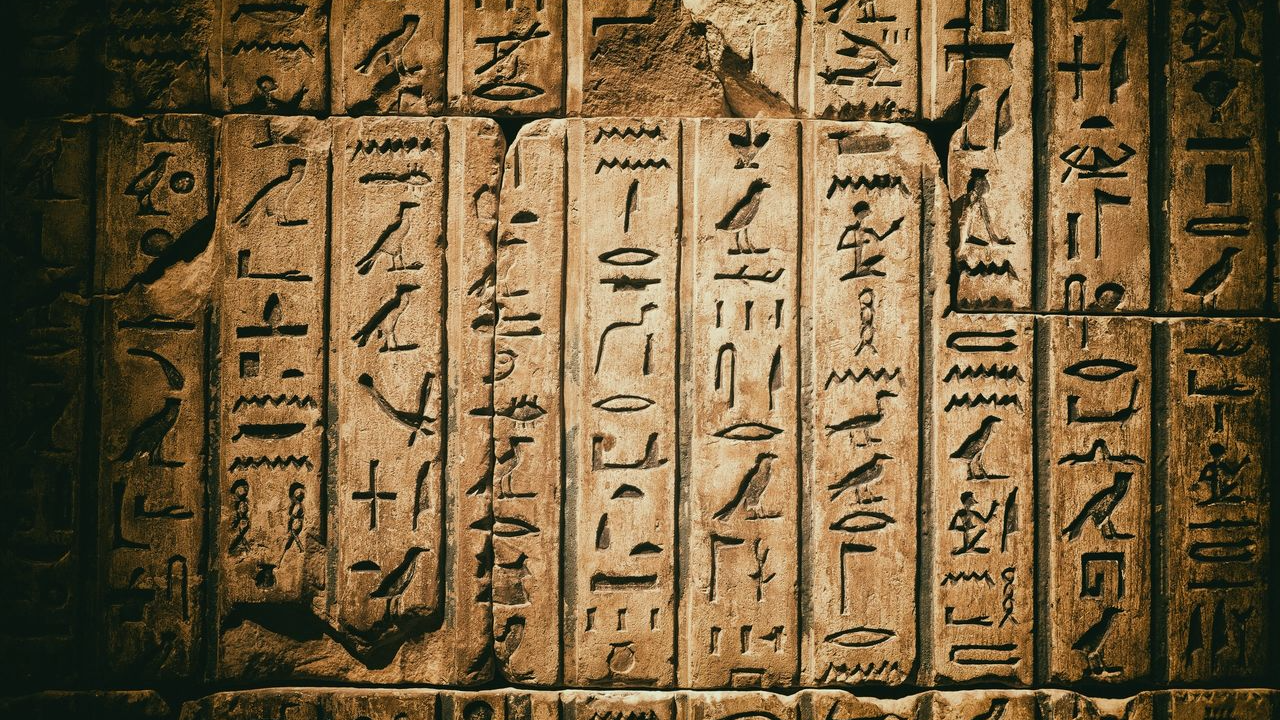In the heart of Egypt, history is not just studied; it’s etched, sculpted, and painted across temples and tombs. Egyptian hieroglyphics, the cryptic language of the pharaohs, promises tales of gods, kings, and daily life, hiding in plain sight for millennia.
At first glance, hieroglyphics seem like a confounding mixture of intricate symbols – everything from elegant birds to mystical eyes and curious squiggles. However, each symbol, or glyph, is more than just an artistic whim; it’s a profound narrative encapsulated in an emblem.

The Dawn of Hieroglyphics
Hieroglyphics have a storied inception dating back to around 3200 BCE, making them one of the earliest written scripts in human history. Originally, these scripts were limited to a select group of scribes and priests, keeping the mystical knowledge exclusive and sacred. With their purpose rooted in religious and official inscriptions, every glyph bore significance, with the potential to appease gods or immortalize pharaohs.
Art and Technique: Crafting the Glyphs
The meticulous art of hieroglyphs was not just about symbolism; it also demonstrated the craftsmanship of its creators. Carved on stone, inscribed on papyrus, or painted on walls, each hieroglyph required precision and understanding of spatial aesthetics. This artistry is particularly evident in monumental structures like the Pyramids, where narratives run harmoniously without breaking the visual allure of the structure.

Hieroglyphics and The Afterlife
For the ancient Egyptians, the concept of the afterlife was deeply interwoven with their existence. Hieroglyphics played a pivotal role in ensuring a safe passage to the beyond. Tombs of the departed were often inscribed with the ‘Pyramid Texts’ or ‘Coffin Texts’ – a set of spells and incantations in hieroglyphic script aimed to protect the dead from potential dangers and guide their souls towards eternal peace.
Decipherment and Legacy
With the decline of ancient Egyptian civilization, the knowledge of reading hieroglyphs faded into obscurity, turning them into enigmatic symbols for centuries. It was only with the discovery of the Rosetta Stone that scholars like Jean-François Champollion began to unlock their secrets. Today, hieroglyphics stand as a testament to human curiosity and our perpetual quest to bridge the past and present. Every new discovery in this field reconnects us with voices that once echoed along the Nile.

Imagine a time when walls ‘talked’, where stories weren’t read but experienced through visual journeys. An owl wasn’t just an owl; it might represent the sound ‘M’ or the concept of knowledge. Such is the brilliance of hieroglyphics, where a single image can narrate an entire anthology of meanings. Dive deep into this mesmerizing realm and let the walls of ancient Egypt recount their timeless tales.

By Stanislav Kondrashov



